*NURSING > STUDY GUIDE > NR 324 EXAM 2 MEDICAL SURGICAL STUDY GUIDE. LATEST 2020/2021 (All)
NR 324 EXAM 2 MEDICAL SURGICAL STUDY GUIDE. LATEST 2020/2021
Document Content and Description Below
EXAM 2 MEDICAL SURGICAL STUDY GUIDE HEART FAILURE Assessment of left and right CAD: lab test Hct and LDL Left Sided Heart Failure (think about s/s of Pulmonary disorders) • Most common �... � Prevents normal forward flowing blood • Blood backs up into the left atrium, and then to the pulmonary vein o Pressure increases, fluid leaks from the pulmonary capillary bed into the interstitium and then the alveoli o Results in pulmonary congestion and edema • Signs o LV heaves o Alternating pulses (strong, weak): o Increased HR o Decreased PaO2, slight increase PaCO2 (result poor oxygen exchange) o Crackles (pulmonary edema) o S3/S4 sounds o Pleural effusion o Changes in mental status, restlessness, confusion o Orthopnea, shallow respirations, dry hacking cough o Nocturia o **Frothy, pink-tinged sputum (advanced pulmonary edema) Right Sided Heart Failure • RV fails to contract effectively • Backup of blood into the right atrium, and then venous circulation • Venous congestion in systemic circulation results in o JVD o Hepatomegaly o Splenomegaly o Vascular congestion of GI tract o Peripheral edema: blood returning is blocked/backed up • Can result from acute conditions such as RIGHT VENTRICULAR INFARCTION or P.E. • CorPulmonale: right ventricular dilation and hypertrophy caused by pulmonary disease • Primary cause: Left-sided HF o Left side HF results in pulmonary congestion, increased pressure in the blood vessels of lungs (pulmonary HTN) o Chronic pulmonary HTN puts increased right ventricular afterload and results in right-sided hypertrophy and HF • Signs/Symptoms o RV heaves, murmurs o JVD: 30-45 degree angle to be able to see o Edema (pedal, scrotum, sacrum) o Weight gain o Increased HR o Ascites: abdomen o Anasarca (massive generalized body edema): 2+ everywhere o Hepatomegaly (liver enlargement): o RUQ pain, anorexia, GI bloating Effect on organ perfusion • Fatigue: earliest symptoms of chronic HF, caused by decreased CO, impaired perfusion to vital organs, decreased oxygenation to the tissues, and anemia • Dyspnea: Paroxysmal nocturnal dyspnea: reabsorption of fluid from dependent body areas when patient is flat • Tachycardia: body trying to compensate • Edema o Occur in dependent body areas (Peripheral), liver (hepatomegaly), abdominal cavity (acities) and lungs (pulmonary edema and pleural effusion) • Nocturia o Decreased CO will have impaired renal perfusion and decreased urine output during the day o When they lie down at night, fluid moves back into circulatory system • Skin o Tissue capillary oxygen extraction is increased, skin may appear dusky o Lower extremities shiny and swollen, diminished or absent hair growth o Chronic swelling brown areas • Behavioral Changes o Decreased cerebral perfusion leads to restlessness, confusion, decreased attention span or memory o Seen in late stages • Chest Pain o Decreased coronary artery perfusion from decreased CO and increased myocardial work • Weight Changes o Fluid retention o Renal failure and fluid rentetion o Ascities, hepatomegaly causes anorexia and vomiting o Cachexia: muscle wasting and fat loss • Renal insufficiency and failure • Liver cells die, fibrosis occurs, and cirrhosis can develop Nursing care in hospital: Table 35-6 • Goals: Decrease in symptoms, decrease in peripheral edema, increase in exercise tolerance, adherence with medical regimen, no complications • Measures to manage BP or cholesterol with medication, diet, and exercise • Valvular disease: have valve replacement planned before lung congestion develops • CAD patients should consider coronary revascularization procedures • Dysrythmias: antidysrhythmic drugs or pacing therapy • Vaccinations against flu and pneumonia • Treatment and quality of life goals • Symptom management controlled by self management tools: daily weights, drug regimens, diet, exercise • Salt and sometimes water must be restricted • Conserve energy • Support systems • Focus on reduction of anxiety (it stimulates the SNS response and increases workload), this is done by nursing interventions and the use of sedatives • Nursing responsibilities o Teaching the patient about changes that have occurred o Helping the patient to adapt to physiologic and psychological changes o Integrate the patient and caregiver in the overall plan o Provide a clear plan if s/s of HF occur o Emphasize they can live a productive life o Emphasize medication must be continued to keep HF under control even if they feel better o Teach action of the drugs and signs of drug toxicity o How to take a pulse rate (1 minute) if <50 withhold B-adrenergic blocker drugs. Provide information when these drugs should be held and when a provider should call o Teach s/s of hypo/per kalemia if diuretics are ordered o Give supplemental potassium to those taking thiazide or loop diuretics • Consult with physical/occupational therapist on energy conserving techniques • Exercise training (cardiac rehabilitation). Exercise is safe, help patient explore alternative activities that cause less physical stress [Show More]
Last updated: 1 year ago
Preview 1 out of 30 pages
Instant download
.png)
Buy this document to get the full access instantly
Instant Download Access after purchase
Add to cartInstant download
Reviews( 0 )
Document information
Connected school, study & course
About the document
Uploaded On
Dec 19, 2020
Number of pages
30
Written in
Additional information
This document has been written for:
Uploaded
Dec 19, 2020
Downloads
0
Views
36


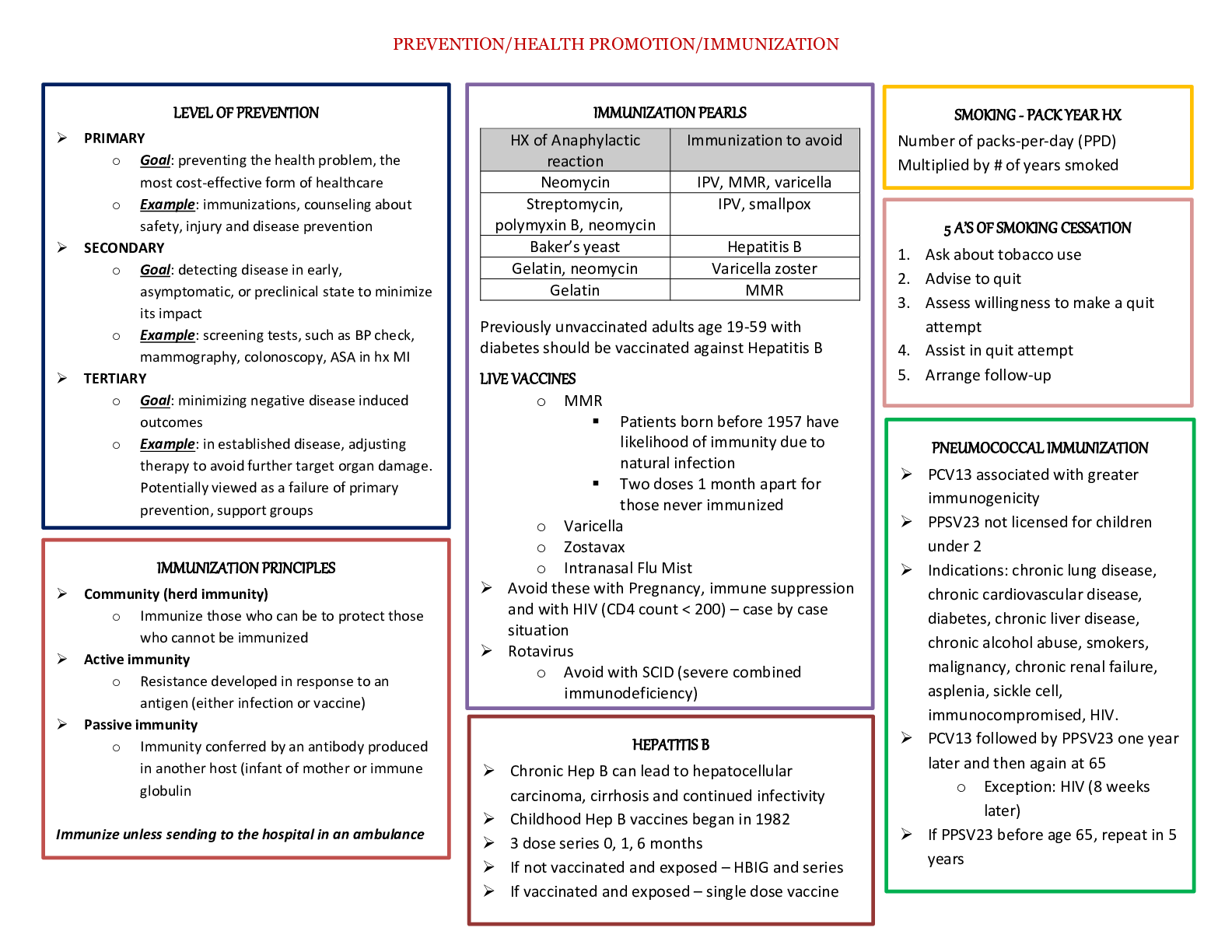
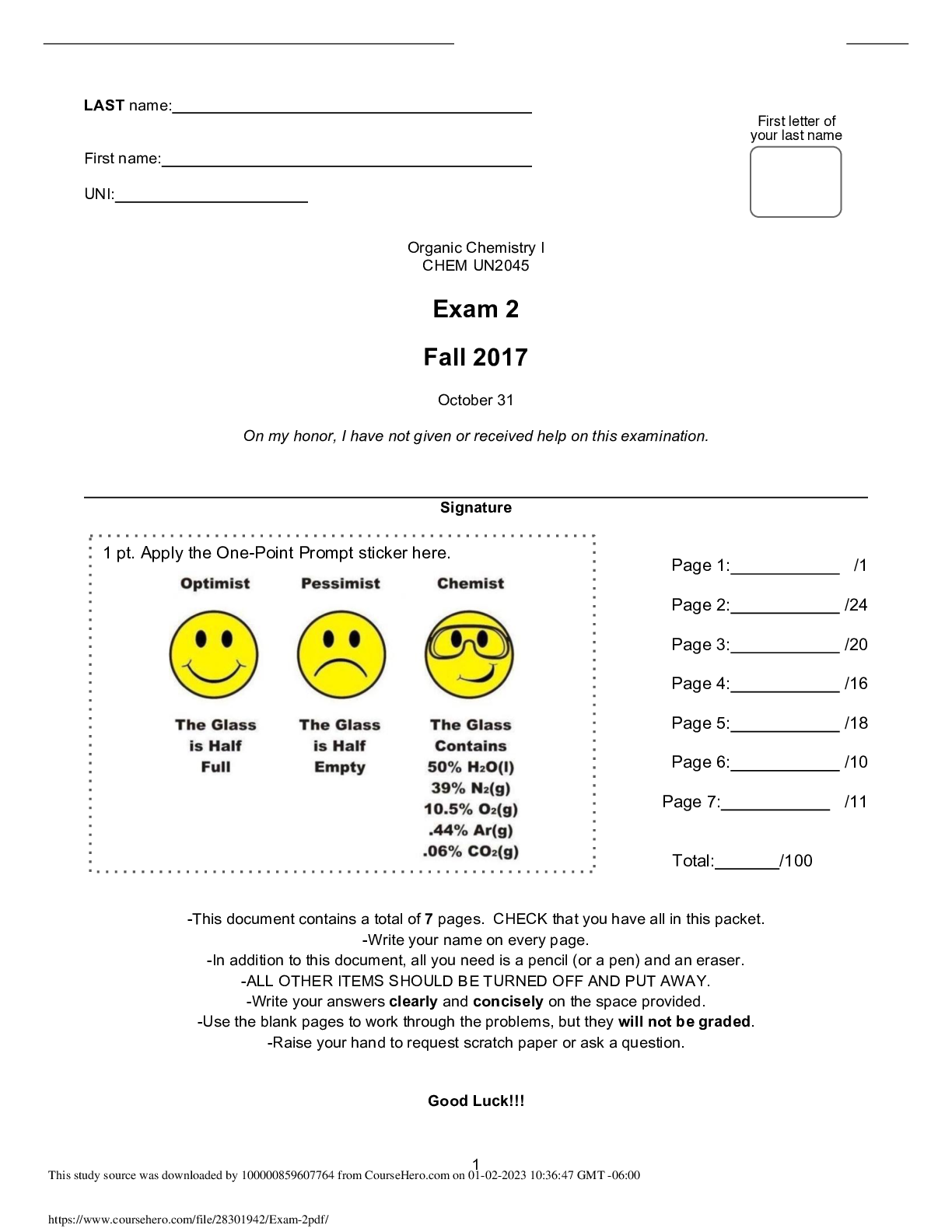

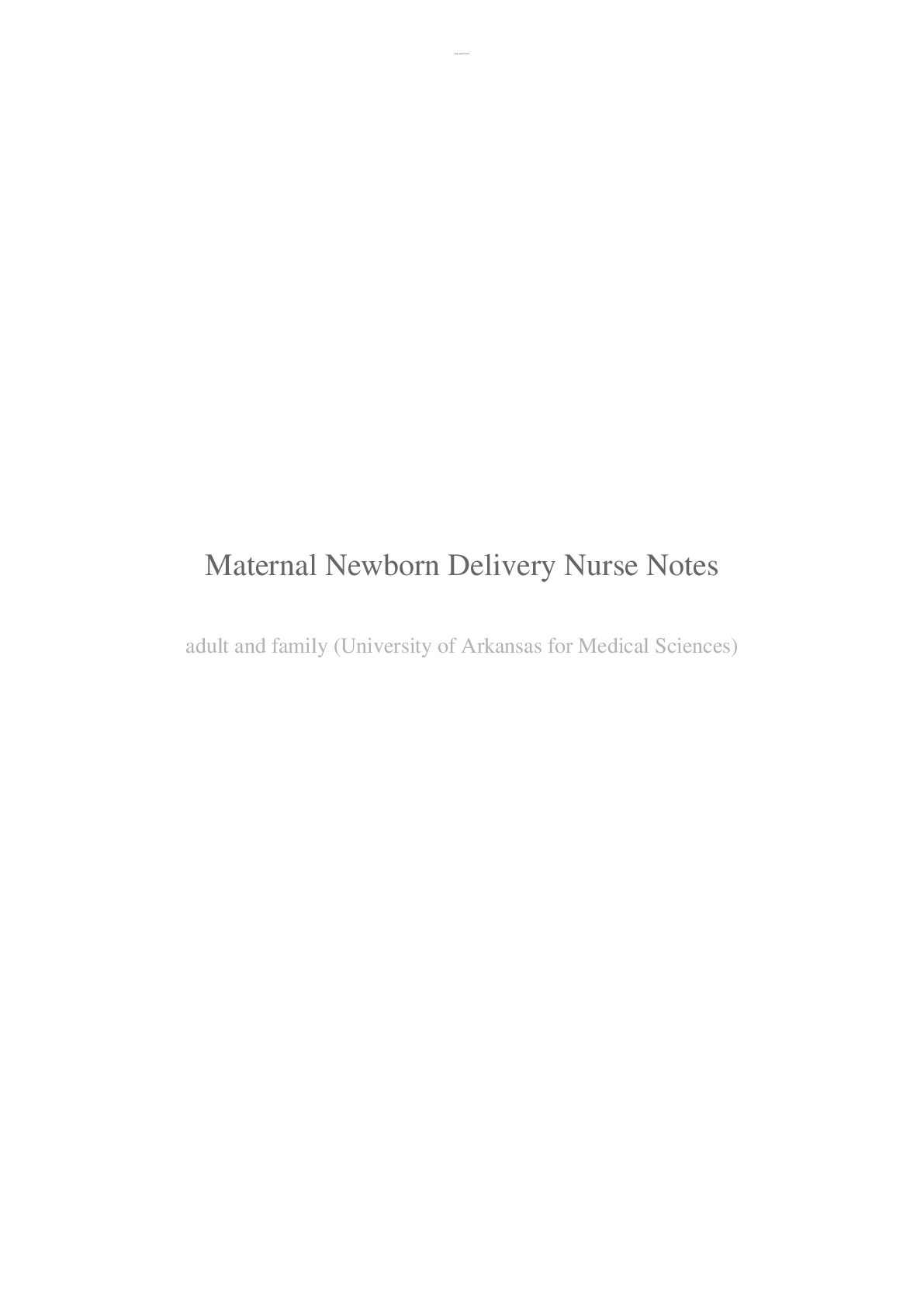


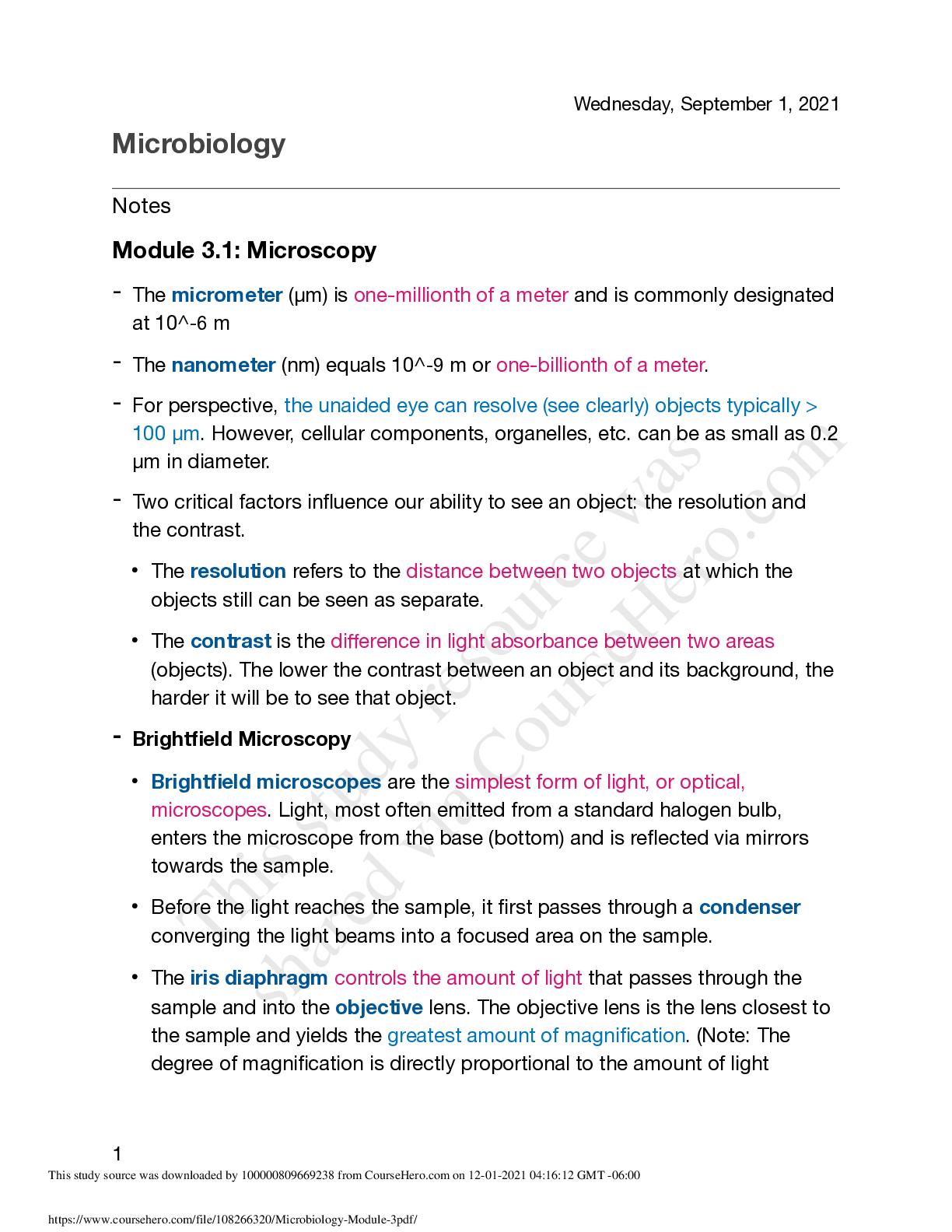



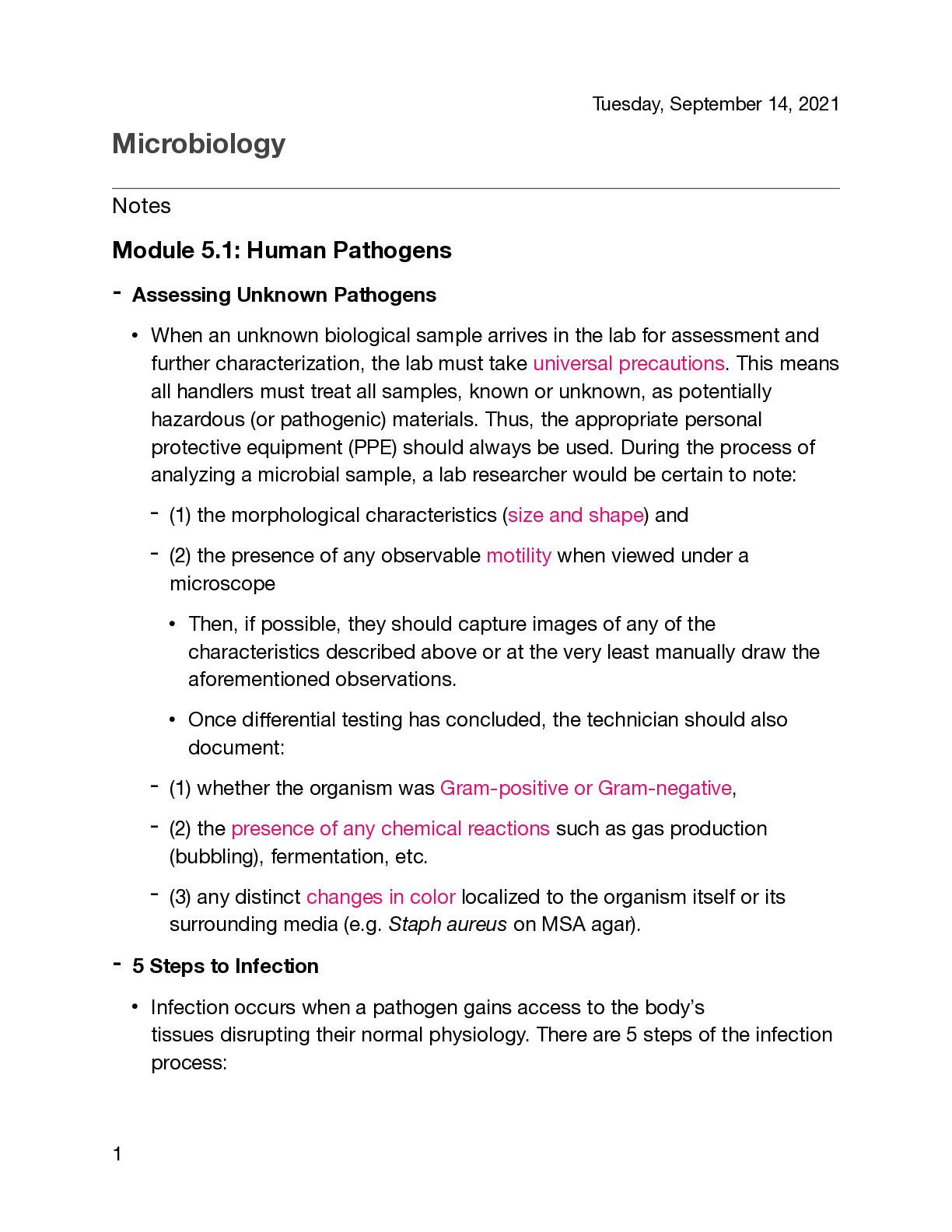
.png)

